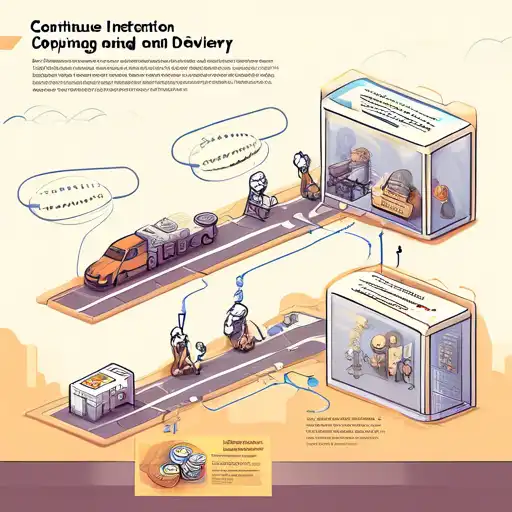What is Continuous Integration and Delivery?
Continuous Integration (CI) and Continuous Delivery (CD) are pivotal practices in the modern software development lifecycle, aimed at improving software quality and speeding up the release process. CI/CD automates the integration of code changes from multiple contributors into a single software project, ensuring that the software can be reliably released at any time.
The Benefits of CI/CD
Adopting CI/CD brings numerous benefits to development teams, including:
- Reduced integration problems
- Faster release cycles
- Higher quality software
- Improved team productivity
By integrating regularly, teams can detect errors quickly, and locate them more easily. This leads to a significant reduction in the time taken to validate and release new software updates.
How CI/CD Works
CI/CD pipelines automate the steps in software delivery, such as initiating code builds, running automated tests, and deploying to a staging or production environment. Tools like Jenkins, Travis CI, and GitLab CI/CD are commonly used to orchestrate these pipelines.
Best Practices for Implementing CI/CD
To maximize the benefits of CI/CD, teams should adhere to the following best practices:
- Maintain a single source repository
- Automate the build
- Make the build self-testing
- Every commit should build on an integration machine
- Keep the build fast
- Test in a clone of the production environment
- Make it easy to get the latest deliverables
- Everyone can see the results of the latest build
Implementing these practices ensures that the CI/CD pipeline is efficient, reliable, and scalable.
Challenges in CI/CD Adoption
While CI/CD offers significant advantages, organizations may face challenges during adoption, such as:
- Cultural resistance to change
- Lack of expertise in automation tools
- Integration with legacy systems
Overcoming these challenges requires a combination of training, tool selection, and gradual implementation.
Conclusion
Continuous Integration and Delivery are essential practices for teams aiming to deliver high-quality software rapidly and reliably. By automating the integration and delivery processes, teams can focus more on development and less on the logistics of software releases. For more insights into DevOps practices, explore our latest trends in DevOps.
